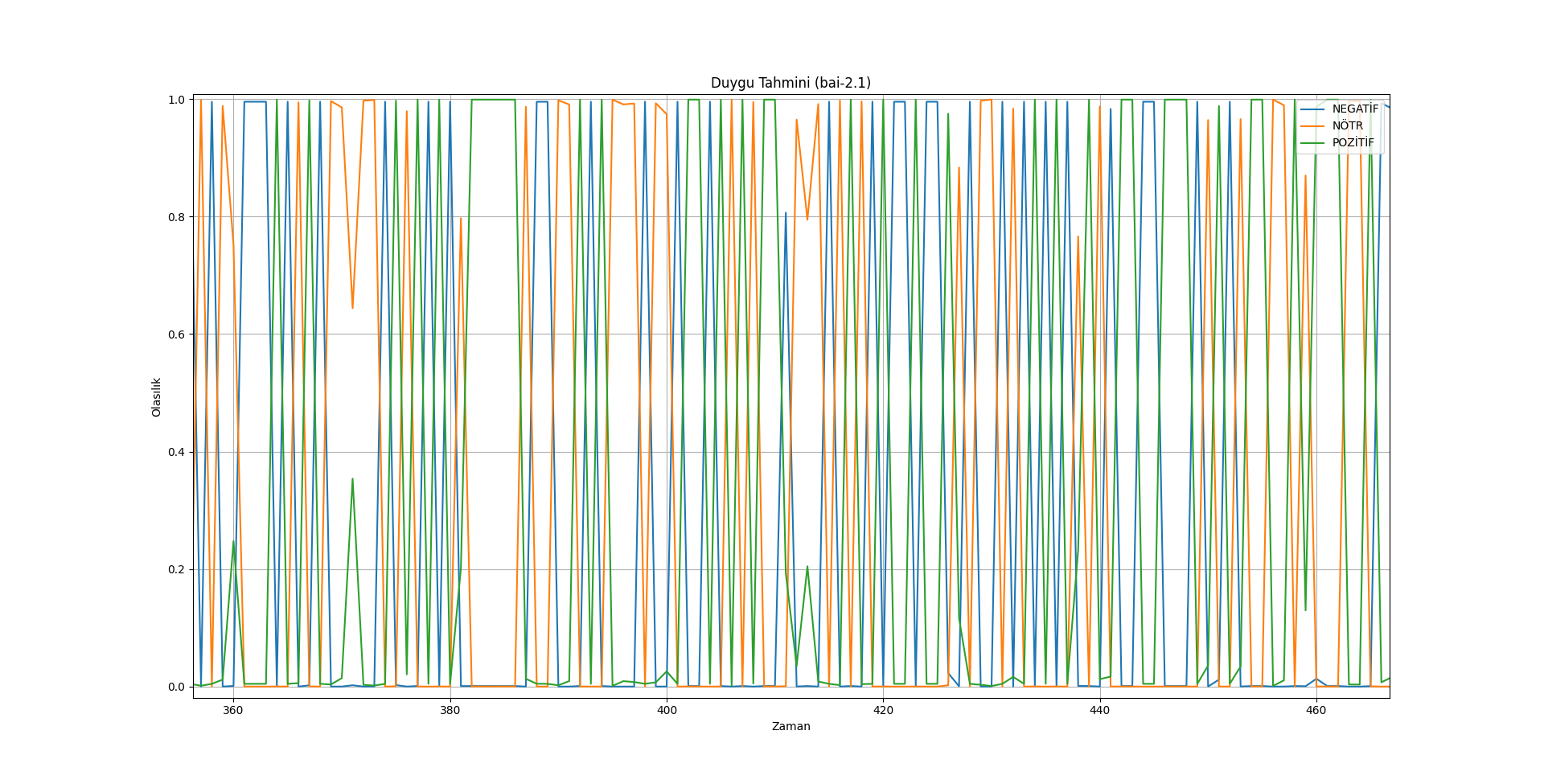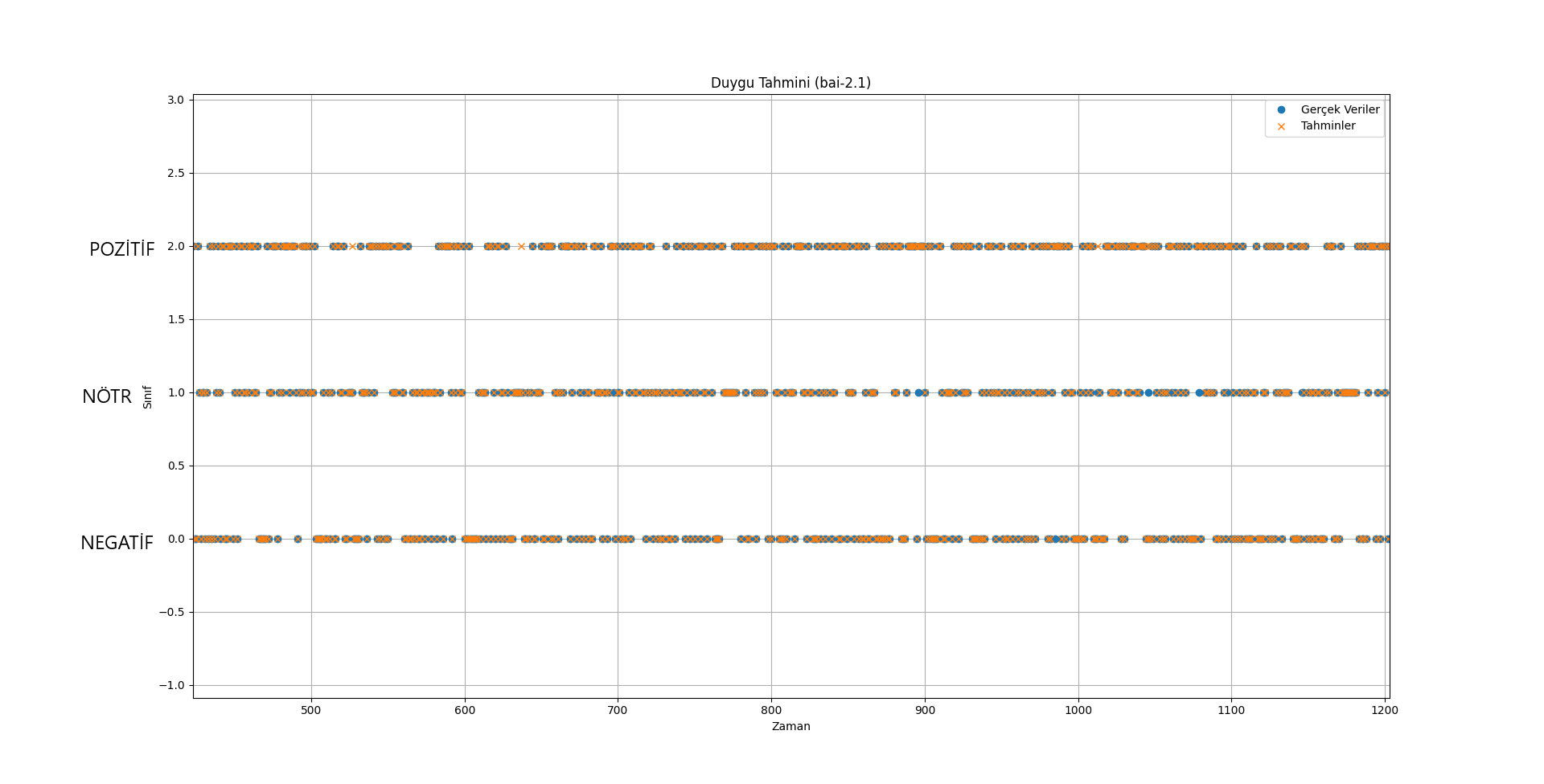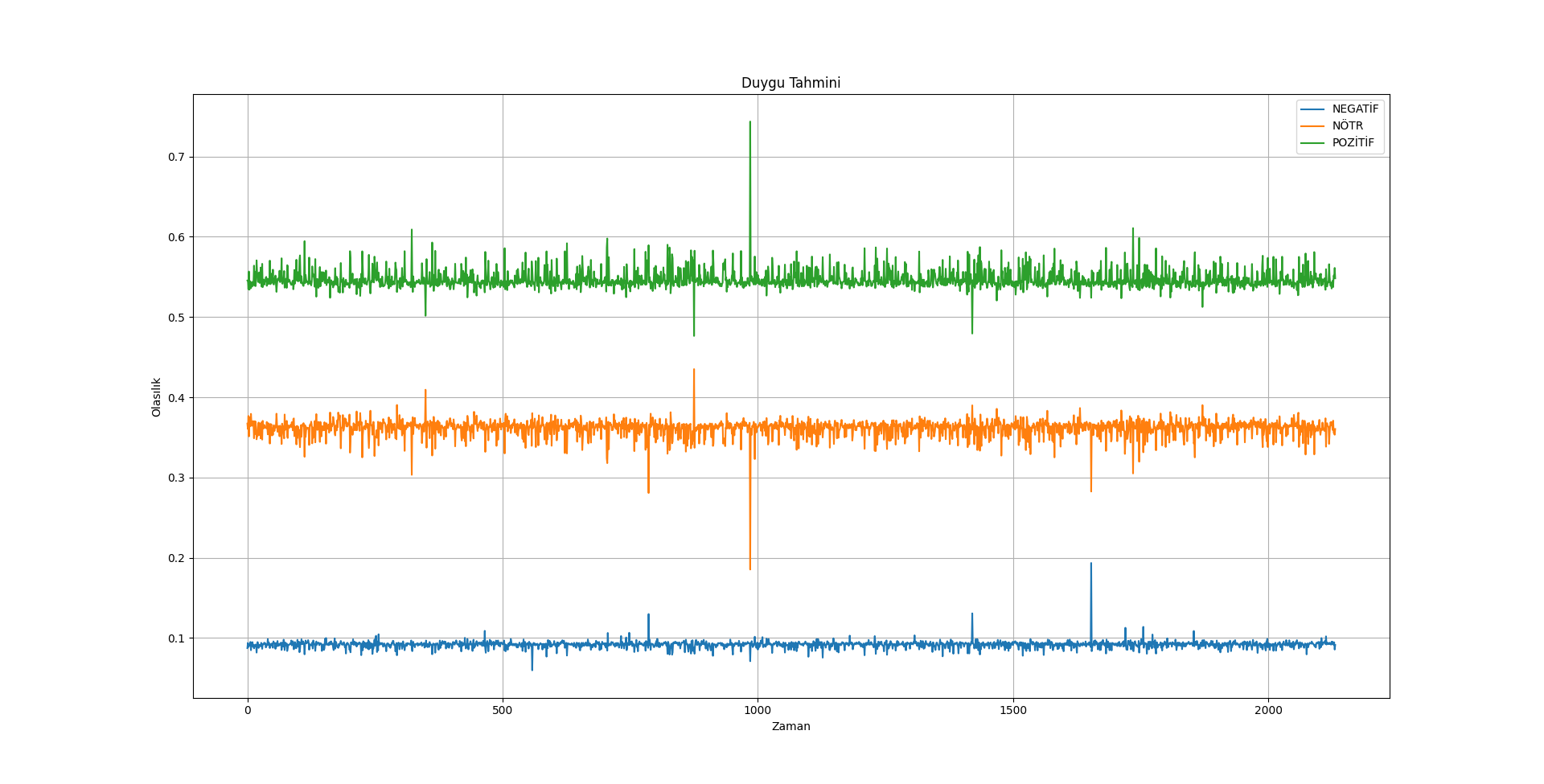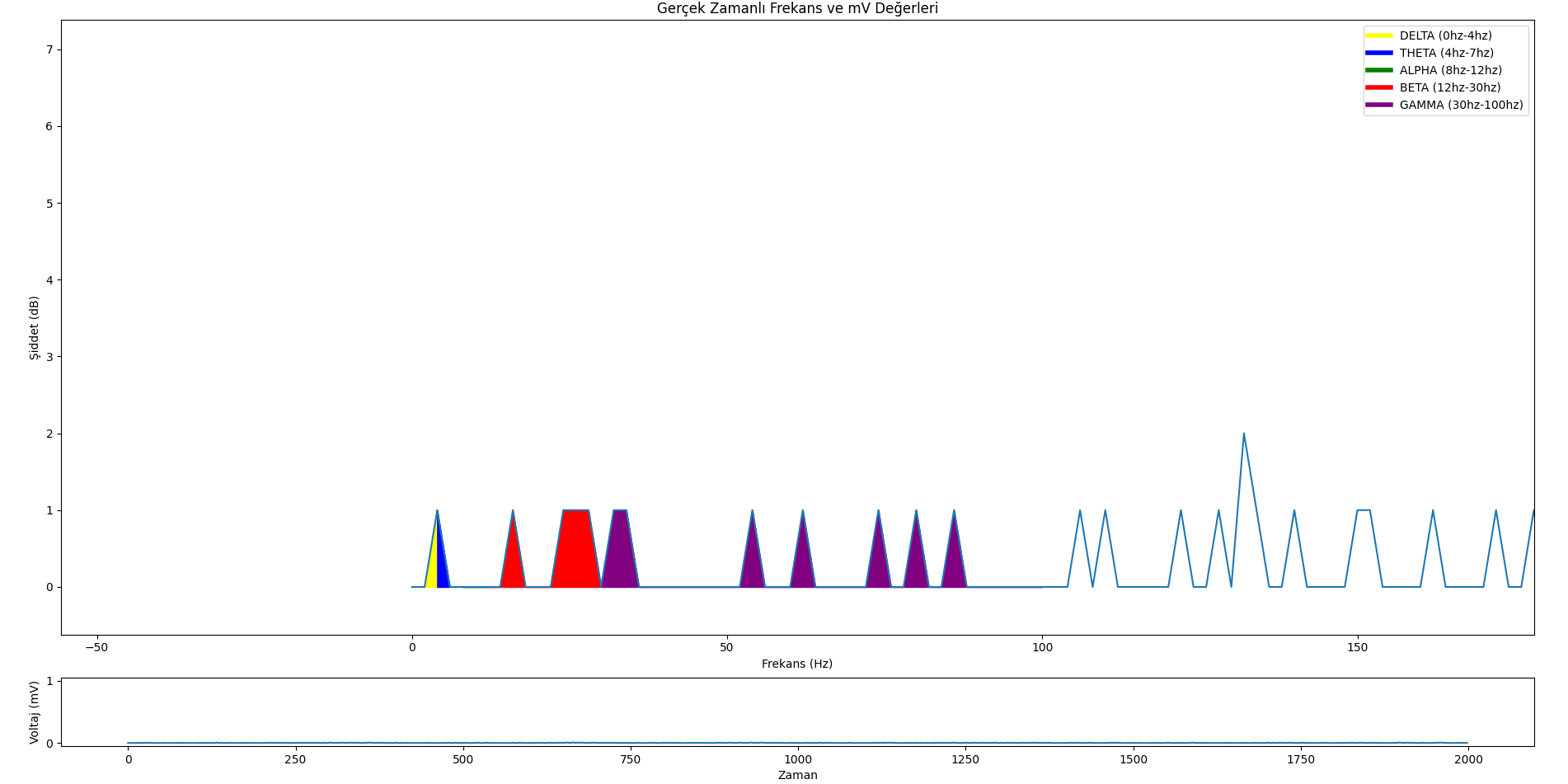bai Modelleri
Model Detayları
bai Modelleri EEG verilerini okumak için eğitilmiştir. Bu modellerin eğitildiği veri setleri Neurazum tarafından gizli tutulmaktadır. Derin öğrenme yöntemleri ile eğitilir ve çok yüksek doğruluk oranları ile EEG üzerinde hassas bir şekilde çalışabilir. Elektrot sayısına bakılmaksızın her türlü EEG cihazı üzerinde çalışabilmektedir (Optimizasyon ve iyileştirmeler devam etmektedir). Nörobilim alanındaki geri kalmışlığa, ilkelliğe ve hata paylarına son vermeyi hedeflemektedir.
Model Tanımı
- Geliştirici: Neurazum
- Yayımcı: Eyüp İpler
- Model Tipi: EEG
- Lisans: CC-BY-NC-SA-4.0
Kullanımlar
Bu modellerdeki amacımız;
- Kişinin duygusunu anlık olarak analiz etmek,
- Epilepsi ve MS gibi tehlikeli hastalıkları nöbet öncesi erken uyarmak ve gerekli önlemleri almak,
- Alzheimer hastaları için erken teşhis ve unutulan kelimeleri bai modeline aktararak hafızada tutmak,
- Günlük hayatta kullanılabilecek bir sesli yapay zeka asistanının geliştirilmesi,
- İnsan vücudunda bulunan 12 adet kraniyal sinir sayesinde hastalık teşhisinde hata payının azaltılması.
Direkt Kullanımlar
Klasik Kullanım:
import numpy as np
import pandas as pd
from sklearn.preprocessing import StandardScaler
from tensorflow.keras.models import load_model
import matplotlib.pyplot as plt
model_path = 'model-yolu'
model = load_model(model_path)
model_name = model_path.split('/')[-1].split('.')[0]
plt.figure(figsize=(10, 6))
plt.title(f'Duygu Tahmini ({model_name})')
plt.xlabel('Zaman')
plt.ylabel('Sınıf')
plt.legend(loc='upper right')
plt.grid(True)
plt.show()
model.summary()
Tahmin Testi:
import numpy as np
import pandas as pd
from sklearn.preprocessing import StandardScaler
from tensorflow.keras.models import load_model
model_path = 'model-yolu'
model = load_model(model_path)
scaler = StandardScaler()
predictions = model.predict(X_new_reshaped)
predicted_labels = np.argmax(predictions, axis=1)
label_mapping = {'NEGATIVE': 0, 'NEUTRAL': 1, 'POSITIVE': 2}
label_mapping_reverse = {v: k for k, v in label_mapping.items()}
#new_input = np.array([[23, 465, 12, 9653] * 637])
new_input = np.random.rand(1, 2548) # 1 örnek ve 2548 özellik
new_input_scaled = scaler.fit_transform(new_input)
new_input_reshaped = new_input_scaled.reshape((new_input_scaled.shape[0], 1, new_input_scaled.shape[1]))
new_prediction = model.predict(new_input_reshaped)
predicted_label = np.argmax(new_prediction, axis=1)[0]
predicted_emotion = label_mapping_reverse[predicted_label]
# TR Lang
if predicted_emotion == 'NEGATIVE':
predicted_emotion = 'Negatif'
elif predicted_emotion == 'NEUTRAL':
predicted_emotion = 'Nötr'
elif predicted_emotion == 'POSITIVE':
predicted_emotion = 'Pozitif'
print(f'Girilen Veri: {new_input}')
print(f'Tahmin Edilen Duygu: {predicted_emotion}')
Gerçek Zamanlı Kullanım (Modelsiz):
import sys
import pyaudio
import numpy as np
import matplotlib.pyplot as plt
from matplotlib.lines import Line2D
from PyQt5.QtWidgets import QApplication, QMainWindow, QPushButton, QVBoxLayout, QWidget
from PyQt5.QtCore import QTimer
from PyQt5.QtGui import QIcon
from matplotlib.backends.backend_qt5agg import FigureCanvasQTAgg as FigureCanvas
from matplotlib.backends.backend_qt5agg import NavigationToolbar2QT as NavigationToolbar
CHUNK = 1000 # Chunk size
FORMAT = pyaudio.paInt16 # Data type (16-bit PCM)
CHANNELS = 1 # (Mono)
RATE = 2000 # Sample rate (Hz)
p = pyaudio.PyAudio()
stream = p.open(format=FORMAT,
channels=CHANNELS,
rate=RATE,
input=True,
frames_per_buffer=CHUNK)
class MainWindow(QMainWindow):
def __init__(self):
super().__init__()
self.initUI()
self.timer = QTimer()
self.timer.timeout.connect(self.update_plot)
self.timer.start(1)
def initUI(self):
self.setWindowTitle('EEG Monitoring by Neurazum')
self.setWindowIcon(QIcon('/neurazumicon.ico'))
self.central_widget = QWidget()
self.setCentralWidget(self.central_widget)
self.layout = QVBoxLayout(self.central_widget)
self.fig, (self.ax1, self.ax2) = plt.subplots(2, 1, figsize=(12, 8), gridspec_kw={'height_ratios': [9, 1]})
self.fig.tight_layout()
self.canvas = FigureCanvas(self.fig)
self.layout.addWidget(self.canvas)
self.toolbar = NavigationToolbar(self.canvas, self)
self.layout.addWidget(self.toolbar)
self.x = np.arange(0, 2 * CHUNK, 2)
self.line1, = self.ax1.plot(self.x, np.random.rand(CHUNK))
self.line2, = self.ax2.plot(self.x, np.random.rand(CHUNK))
self.legend_elements = [
Line2D([0, 4], [0], color='yellow', lw=4, label='DELTA (0hz-4hz)'),
Line2D([4, 7], [0], color='blue', lw=4, label='TETA (4hz-7hz)'),
Line2D([8, 12], [0], color='green', lw=4, label='ALFA (8hz-12hz)'),
Line2D([12, 30], [0], color='red', lw=4, label='BETA (12hz-30hz)'),
Line2D([30, 100], [0], color='purple', lw=4, label='GAMA (30hz-100hz)')
]
def update_plot(self):
data = np.frombuffer(stream.read(CHUNK), dtype=np.int16)
data = np.abs(data)
voltage_data = data * (3.3 / 1024) # Voltajı "mV"'ye dönüştürme
frequency = voltage_data / (RATE * 1000) # Frekans hesaplama
self.line1.set_ydata(data)
self.line2.set_ydata(frequency)
for coll in self.ax1.collections:
coll.remove()
self.ax1.fill_between(self.x, data, where=((self.x >= 0) & (self.x <= 4)), color='yellow', alpha=1)
self.ax1.fill_between(self.x, data, where=((self.x >= 4) & (self.x <= 7)), color='blue', alpha=1)
self.ax1.fill_between(self.x, data, where=((self.x >= 8) & (self.x <= 12)), color='green', alpha=1)
self.ax1.fill_between(self.x, data, where=((self.x >= 12) & (self.x <= 30)), color='red', alpha=1)
self.ax1.fill_between(self.x, data, where=((self.x >= 30) & (self.x <= 100)), color='purple', alpha=1)
self.ax1.legend(handles=self.legend_elements, loc='upper right')
self.ax1.set_ylabel('Genlik (uV)')
self.ax1.set_xlabel('Frekans (Hz)')
self.ax1.set_title('Frekans ve Genlik Değerleri')
self.ax2.set_ylabel('Voltaj (mV)')
self.ax2.set_xlabel('Zaman')
self.canvas.draw()
def close_application(self):
self.timer.stop()
stream.stop_stream()
stream.close()
p.terminate()
sys.exit(app.exec_())
if __name__ == '__main__':
app = QApplication(sys.argv)
mainWin = MainWindow()
mainWin.show()
sys.exit(app.exec_())
Duyguları İçeren Veri Seti Üzerinde Tahmin:
import numpy as np
import pandas as pd
from sklearn.preprocessing import StandardScaler
from tensorflow.keras.models import load_model
model_path = 'model-yolu'
new_data_path = 'veri-seti-yolu'
model = load_model(model_path)
new_data = pd.read_csv(new_data_path)
X_new = new_data.drop('label', axis=1)
y_new = new_data['label']
scaler = StandardScaler()
X_new_scaled = scaler.fit_transform(X_new)
X_new_reshaped = X_new_scaled.reshape((X_new_scaled.shape[0], 1, X_new_scaled.shape[1]))
predictions = model.predict(X_new_reshaped)
predicted_labels = np.argmax(predictions, axis=1)
label_mapping = {'NEGATIVE': 0, 'NEUTRAL': 1, 'POSITIVE': 2}
label_mapping_reverse = {v: k for k, v in label_mapping.items()}
actual_labels = y_new.replace(label_mapping).values
accuracy = np.mean(predicted_labels == actual_labels)
new_input = np.random.rand(2548, 2548) # 1 örnek ve 2548 özellik
new_input_scaled = scaler.transform(new_input)
new_input_reshaped = new_input_scaled.reshape((new_input_scaled.shape[0], 1, new_input_scaled.shape[1]))
new_prediction = model.predict(new_input_reshaped)
predicted_label = np.argmax(new_prediction, axis=1)[0]
predicted_emotion = label_mapping_reverse[predicted_label]
# TR Lang
if predicted_emotion == 'NEGATIVE':
predicted_emotion = 'Negatif'
elif predicted_emotion == 'NEUTRAL':
predicted_emotion = 'Nötr'
elif predicted_emotion == 'POSITIVE':
predicted_emotion = 'Pozitif'
print(f'Giriş Verisi: {new_input}')
print(f'Tahmin Edilen Duygu: {predicted_emotion}')
print(f'Doğruluk: %{accuracy * 100:.5f}')
Önyargı, Riskler ve Kısıtlamalar
bai Modelleri;
- En büyük riski yanlış tahmin etmesidir :),
- Herhangi bir kısıtlama bulunmamaktadır (şimdilik),
- Beyin sinyallerinden elde edilen veriler kişisel bilgi içermez (çünkü bunlar sadece mV değerleridir). Bu nedenle, bai tarafından yapılan her tahmin sadece bir "TAHMİN" dir.
Öneriler
- Çok fazla duygu durum değişikliği yaşamamaya çalışın,
- Çok fazla farklı nitelikte düşünce/karar almayın,
- Çok fazla hata yaptığında, yanlış cevap verdiğini düşünmeyin (doğru cevap verdiğini farz edin),
Not: Bu öğeler sadece modelin daha iyi çalışması için önerilerdir. Herhangi bir risk taşımazlar.
Modele Nasıl Başlanır
- Modelin içeriğindeki gerekli modülleri kurmak için;
pip install -r requirements.txt- Örnek kullanımla modelin ve veri setinin yolunu yerleştirin.
- Ve dosyayı çalıştırın.
Değerlendirme
- bai-2.0 => (Doğruluk oranı çok yüksek = %97,93621013133208) (DUYGUSAL SINIFLANDIRMA)
- bai-2.1 => (Doğruluk oranı çok yüksek = %97,93621013133208) (DUYGUSAL SINIFLANDIRMA)
- bai-2.2 => (Doğruluk oranı çok yüksek = %94,8874296435272) (DUYGUSAL SINIFLANDIRMA)
- bai-3.0 Emotion => (Doğruluk oranı çok yüksek = %97,79549718574108) (DUYGUSAL SINIFLANDIRMA)
- bai-3.0 Epilepsy => (Doğruluk oranı yüksek = %68,90829694323143) (EPİLEPSİ NÖBET TESPİTİ)
- bai-3.1 Emotion => (Doğruluk oranı çok yüksek = %95,1219512195122) (DUYGUSAL SINIFLANDIRMA)
Sonuçlar
Özet
Özetle bai modelleri, kişinin düşüncelerini ve duygularını öğrenmek ve tahmin etmek için geliştirilmeye devam ediyor.
Donanım
Tek ihtiyacınız olan şey EEG!
Yazılım
Daha sonra bu EEG cihazını (şimdilik sadece ses girişi ile) yayınladığımız gerçek zamanlı veri izleme uygulamasıyla çalıştırabilirsiniz.
GitHub: https://github.com/neurazum/Realtime-EEG-Monitoring
Daha Fazla
LinkedIn: https://www.linkedin.com/company/neurazum
Yazar
Eyüp İpler - https://www.linkedin.com/in/eyupipler/
İletişim
--------------------------------------
bai Models
Model Details
bai Models are trained to read EEG data. The data sets on which these models are trained are kept confidential by Neurazum. It is trained with deep learning methods and can work precisely on EEG with very high accuracy rates. It can work on all kinds of EEG devices regardless of the number of electrodes (Optimisation and improvements are ongoing). It aims to end the backwardness, primitiveness and error margins in the field of neuroscience.
Model Description
- Developed by: Neurazum
- Shared by: Eyüp İpler
- Model type: EEG
- License: CC-BY-NC-SA-4.0
Uses
Our aim in these models;
- To analyse the person's emotion instantly,
- To warn dangerous patients such as epilepsy and MS early before the seizure and to take the necessary precautions,
- Early diagnosis for Alzheimer's patients and the bai model helps the person by memorising forgotten words,
- Development of a voice assistant that can be used in everyday life,
- Reducing the margin of error in disease diagnosis thanks to the 12 cranial nerves in the human body.
Direct Uses
Classical Use:
import numpy as np
import pandas as pd
from sklearn.preprocessing import StandardScaler
from tensorflow.keras.models import load_model
import matplotlib.pyplot as plt
model_path = 'model-path'
model = load_model(model_path)
model_name = model_path.split('/')[-1].split('.')[0]
plt.figure(figsize=(10, 6))
plt.title(f'Emotion Prediction ({model_name})')
plt.xlabel('Time')
plt.ylabel('Class')
plt.legend(loc='upper right')
plt.grid(True)
plt.show()
model.summary()
Prediction Test:
import numpy as np
import pandas as pd
from sklearn.preprocessing import StandardScaler
from tensorflow.keras.models import load_model
model_path = 'model-path'
model = load_model(model_path)
scaler = StandardScaler()
predictions = model.predict(X_new_reshaped)
predicted_labels = np.argmax(predictions, axis=1)
label_mapping = {'NEGATIVE': 0, 'NEUTRAL': 1, 'POSITIVE': 2}
label_mapping_reverse = {v: k for k, v in label_mapping.items()}
#new_input = np.array([[23, 465, 12, 9653] * 637])
new_input = np.random.rand(1, 2548) # 1 sample and 2548 features
new_input_scaled = scaler.fit_transform(new_input)
new_input_reshaped = new_input_scaled.reshape((new_input_scaled.shape[0], 1, new_input_scaled.shape[1]))
new_prediction = model.predict(new_input_reshaped)
predicted_label = np.argmax(new_prediction, axis=1)[0]
predicted_emotion = label_mapping_reverse[predicted_label]
# TR Lang
if predicted_emotion == 'NEGATIVE':
predicted_emotion = 'Negatif'
elif predicted_emotion == 'NEUTRAL':
predicted_emotion = 'Nötr'
elif predicted_emotion == 'POSITIVE':
predicted_emotion = 'Pozitif'
print(f'Input Data: {new_input}')
print(f'Predicted Emotion: {predicted_emotion}')
Realtime Use (EEG Monitoring without AI Model):
import sys
import pyaudio
import numpy as np
import matplotlib.pyplot as plt
from matplotlib.lines import Line2D
from PyQt5.QtWidgets import QApplication, QMainWindow, QPushButton, QVBoxLayout, QWidget
from PyQt5.QtCore import QTimer
from PyQt5.QtGui import QIcon
from matplotlib.backends.backend_qt5agg import FigureCanvasQTAgg as FigureCanvas
from matplotlib.backends.backend_qt5agg import NavigationToolbar2QT as NavigationToolbar
CHUNK = 1000 # Chunk size
FORMAT = pyaudio.paInt16 # Data type (16-bit PCM)
CHANNELS = 1 # (Mono)
RATE = 2000 # Sample rate (Hz)
p = pyaudio.PyAudio()
stream = p.open(format=FORMAT,
channels=CHANNELS,
rate=RATE,
input=True,
frames_per_buffer=CHUNK)
class MainWindow(QMainWindow):
def __init__(self):
super().__init__()
self.initUI()
self.timer = QTimer()
self.timer.timeout.connect(self.update_plot)
self.timer.start(1)
def initUI(self):
self.setWindowTitle('EEG Monitoring by Neurazum')
self.setWindowIcon(QIcon('/neurazumicon.ico'))
self.central_widget = QWidget()
self.setCentralWidget(self.central_widget)
self.layout = QVBoxLayout(self.central_widget)
self.fig, (self.ax1, self.ax2) = plt.subplots(2, 1, figsize=(12, 8), gridspec_kw={'height_ratios': [9, 1]})
self.fig.tight_layout()
self.canvas = FigureCanvas(self.fig)
self.layout.addWidget(self.canvas)
self.toolbar = NavigationToolbar(self.canvas, self)
self.layout.addWidget(self.toolbar)
self.x = np.arange(0, 2 * CHUNK, 2)
self.line1, = self.ax1.plot(self.x, np.random.rand(CHUNK))
self.line2, = self.ax2.plot(self.x, np.random.rand(CHUNK))
self.legend_elements = [
Line2D([0, 4], [0], color='yellow', lw=4, label='DELTA (0hz-4hz)'),
Line2D([4, 7], [0], color='blue', lw=4, label='THETA (4hz-7hz)'),
Line2D([8, 12], [0], color='green', lw=4, label='ALPHA (8hz-12hz)'),
Line2D([12, 30], [0], color='red', lw=4, label='BETA (12hz-30hz)'),
Line2D([30, 100], [0], color='purple', lw=4, label='GAMMA (30hz-100hz)')
]
def update_plot(self):
data = np.frombuffer(stream.read(CHUNK), dtype=np.int16)
data = np.abs(data)
voltage_data = data * (3.3 / 1024) # Voltage to "mV"
frequency = voltage_data / (RATE * 1000) # Calculate to frequency
self.line1.set_ydata(data)
self.line2.set_ydata(frequency)
for coll in self.ax1.collections:
coll.remove()
self.ax1.fill_between(self.x, data, where=((self.x >= 0) & (self.x <= 4)), color='yellow', alpha=1)
self.ax1.fill_between(self.x, data, where=((self.x >= 4) & (self.x <= 7)), color='blue', alpha=1)
self.ax1.fill_between(self.x, data, where=((self.x >= 8) & (self.x <= 12)), color='green', alpha=1)
self.ax1.fill_between(self.x, data, where=((self.x >= 12) & (self.x <= 30)), color='red', alpha=1)
self.ax1.fill_between(self.x, data, where=((self.x >= 30) & (self.x <= 100)), color='purple', alpha=1)
self.ax1.legend(handles=self.legend_elements, loc='upper right')
self.ax1.set_ylabel('Amplitude (uV)')
self.ax1.set_xlabel('Frequency (Hz)')
self.ax1.set_title('Frequency and mV')
self.ax2.set_ylabel('Voltage (mV)')
self.ax2.set_xlabel('Time')
self.canvas.draw()
def close_application(self):
self.timer.stop()
stream.stop_stream()
stream.close()
p.terminate()
sys.exit(app.exec_())
if __name__ == '__main__':
app = QApplication(sys.argv)
mainWin = MainWindow()
mainWin.show()
sys.exit(app.exec_())
Emotion Dataset Prediction Use:
import numpy as np
import pandas as pd
from sklearn.preprocessing import StandardScaler
from tensorflow.keras.models import load_model
model_path = 'model-path'
new_data_path = 'dataset-path'
model = load_model(model_path)
new_data = pd.read_csv(new_data_path)
X_new = new_data.drop('label', axis=1)
y_new = new_data['label']
scaler = StandardScaler()
X_new_scaled = scaler.fit_transform(X_new)
X_new_reshaped = X_new_scaled.reshape((X_new_scaled.shape[0], 1, X_new_scaled.shape[1]))
predictions = model.predict(X_new_reshaped)
predicted_labels = np.argmax(predictions, axis=1)
label_mapping = {'NEGATIVE': 0, 'NEUTRAL': 1, 'POSITIVE': 2}
label_mapping_reverse = {v: k for k, v in label_mapping.items()}
actual_labels = y_new.replace(label_mapping).values
accuracy = np.mean(predicted_labels == actual_labels)
new_input = np.random.rand(2548, 2548) # 1 sample and 2548 features
new_input_scaled = scaler.transform(new_input)
new_input_reshaped = new_input_scaled.reshape((new_input_scaled.shape[0], 1, new_input_scaled.shape[1]))
new_prediction = model.predict(new_input_reshaped)
predicted_label = np.argmax(new_prediction, axis=1)[0]
predicted_emotion = label_mapping_reverse[predicted_label]
# TR Lang
if predicted_emotion == 'NEGATIVE':
predicted_emotion = 'Negatif'
elif predicted_emotion == 'NEUTRAL':
predicted_emotion = 'Nötr'
elif predicted_emotion == 'POSITIVE':
predicted_emotion = 'Pozitif'
print(f'Inputs: {new_input}')
print(f'Predicted Emotion: {predicted_emotion}')
print(f'Accuracy: %{accuracy * 100:.5f}')
Bias, Risks, and Limitations
bai Models;
- The biggest risk is wrong prediction :),
- It does not contain any restrictions in any area (for now),
- Data from brain signals do not contain personal information (because they are only mV values). Therefore, every guess made by bai is only a "GUESS".
Recommendations
- Do not experience too many mood changes,
- Do not take thoughts/decisions with too many different qualities,
- When he/she makes a lot of mistakes, do not think that he/she gave the wrong answer (think of it as giving the correct answer),
Note: These items are only recommendations for better operation of the model. They do not carry any risk.
How to Get Started with the Model
- To install the necessary modules in the model;
pip install -r requirements.txt- Place the path of the model in the example uses.
- And run the file.
Evaluation
- bai-2.0 => (Accuracy very high = %97,93621013133208) (EMOTIONAL CLASSIFICATION)
- bai-2.1 => (Accuracy very high = %97,93621013133208) (EMOTIONAL CLASSIFICATION)
- bai-2.2 => (Accuracy very high = %94,8874296435272) (EMOTIONAL CLASSIFICATION)
- bai-3.0 Emotion => (Accuracy very high = %97,79549718574108) (EMOTIONAL CLASSIFICATION)
- bai-3.0 Epilepsy => (Accuracy high = %68,90829694323143) (SEIZURE DETECTION)
- bai-3.1 Emotion => (Accuracy very high = %95,1219512195122) (EMOTIONAL CLASSIFICATION)
Results
Summary
In summary, bai models continue to be developed to learn about and predict a person's thoughts and emotions.
Hardware
The EEG is the only hardware!
Software
You can then operate this EEG device (for the time being only with audio input) with the real-time data monitoring application we have published.
GitHub: https://github.com/neurazum/Realtime-EEG-Monitoring
More
LinkedIn: https://www.linkedin.com/company/neurazum
Author
Eyüp İpler - https://www.linkedin.com/in/eyupipler/
Contact
- Downloads last month
- 167



